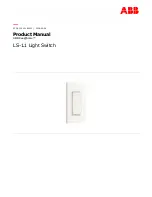
Performer-HD Instruction Manual
3-19
Serial Protocol Descriptions
SERR
(08, System Service Error) is also sent when a system service message
is encountered (byte code between 00 and 1F) that Performer cannot han-
dle, or when a message that it can handle contains a bad data item.
CERR
(29, Common Error) is sent when a common message is encountered
(byte code between 20 and 3F) that Performer cannot handle, or when a
message that it can handle contains a bad data item.
Any
SERR
and
CERR
that is generated as a result of a bad value in the mes-
sage or inability to perform the message function contains all data bytes of
the message, from the command keyword up to the data byte at which the
error was detected.
Since the type-specific messages do not have an error response message,
CERR
is sent when a type-specific message is received that has an error in it.
IFRE
(32, Information Field Item Response) is sent in response to a READ
message or a previous UPDATE request.
STUR
(40, Startup Response) is sent when the router is powered up or reset.
The SMPTE standard document, on page 37, shows in Figure 11c that a
Block keyword can surround a group of messages, and that additional mes-
sages can both precede and follow the block of data in the same superviso-
ry-level message block. The SMPTE Supplement 1 to 3245-E says, on page
15 under the description of the Block command, that the command shall be
used on every occasion where message concatenation is employed. These
two seem to conflict with each other. Performer sends outgoing messages
without a Block command, and parses incoming messages with or without
Block commands.
The Specific Mute message definition does not explicitly say that more than
one information field can be supplied, wrapped in a Begin/End construct.
However, since this is the usual definition in other parts of the standard,
Performer-HD allows that construct.
Likewise, the Preset message definition does not explicitly say that more
than one information field name/value pair can be supplied, wrapped in a
Begin/End construct. This construct is allowed by Performer.-HD
The following I/F names can be used in a Preset message: Matrix, Level,
Source, and Destination pointers. In particular, note that sources-to-desti-
nation and destinations-to-source may not be used.
The Preset message will not allow the Matrix, Level, Source, or Destination
pointers to be set to values that are invalid for this matrix. The SMPTE stan-
dard does not say whether invalid I/F values can be set or not.
Summary of Contents for PERFORMER-HD
Page 5: ...Performer HD Instruction Manual v Contents Glossary Index ...
Page 6: ...vi Performer HD Instruction Manual Contents ...
Page 8: ...viii Performer HD Instruction Manual Preface ...
Page 32: ...2 14 Performer HD Instruction Manual Section 2 Installation ...
Page 54: ...3 22 Performer HD Instruction Manual Section 3 Operation and Maintenance ...
Page 58: ...Glossary 4 Performer HD Instruction Manual VCO Voltage Control Oscillator ...










































